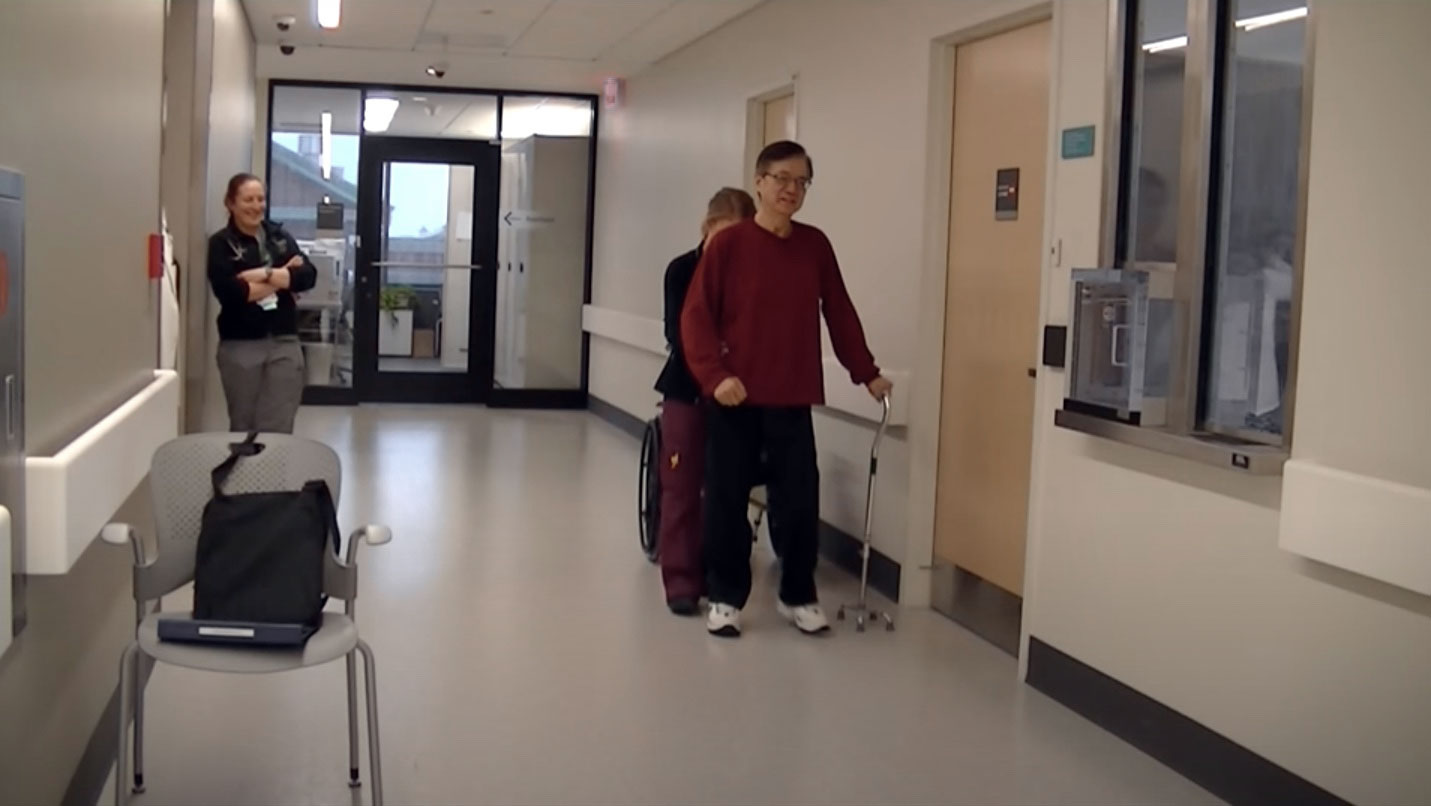Neurorehabilitation and Neural Repair, 2025;0(0).
Cavanaugh JT, Porciuncula F, Zajac JA, et al.
As it relates to walking, there is profound evidence that rhythm is able to engage the motor system to improve functional outcomes1.
Studies have shown that there is rich connectivity between the auditory and motor systems via multiple cortical and subcortical networks2.
Specifically, it has been shown that the auditory and motor system can synchronize subconsciously to an external auditory rhythmic cue, a phenomenon known as “auditory-motor entrainment” (also referred to as “entrainment”).
The auditory rhythm provides a consistent temporal structure for synchronization between these two systems3.
Entrainment serves as the foundation for our platform.

Over the last thirty years, entrainment has been used as the foundation of a standardized clinical intervention, termed “Rhythmic Auditory Stimulation” (RAS).
Robust clinical research has demonstrated the ability to improve functional outcomes in walking following neurologic disease and injury, including stroke1, Parkinson’s disease2, and multiple sclerosis 3.
The outcomes of RAS can carry over into daily use after the intervention is used, which can produce immediate improvements in walking speed 4, stride length 5, and symmetry 6. It can even reduce falls 7.
Our technology is based on three decades of neuroscience research. We’ve compiled a list of some publications about how music can be used to improve walking for those who want to learn more.
Click below to read about the InTandem pivotal trial, published in Nature Communications.
MedRhythms is developing innovative technologies that aim to improve walking. Best of all, they can be used from home.
Sign up for the MedRhythms Newsletter to get updates on our technology, clinical research, and more!
